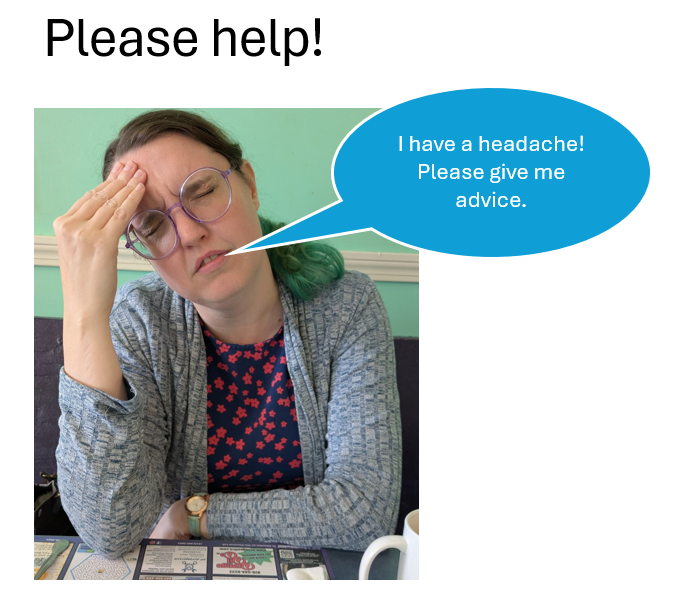Level: Pre-intermediate
Length: 45 minutes
Main aim: By the end of the lesson, Ss will be better able to use the imperative and should to give advice in the context of minor life difficulties, such as being tired all the time or struggling to clean.
Subsidiary aim: Students will be better able to fluently give advice in the context of minor life difficulties.
Setting: Online
In Teaching Practice 3 I was assigned my first grammar lessons. The aim was to help pre-intermediate learners use imperatives and should to give advice about life’s little problems (like being tired, messy rooms, or forgetting to eat breakfast).
What the Lesson Involved
- In the lead-in, I showed students a picture of my ‘brother’ and a sink full of dishes, asking them to give him advice on what to do. The tone was jovial and engaging.
- I then had students notice the difference between instructions (Listen to music while you clean) and advice (You should listen to music while you clean) to begin understanding the differences between using imperatives and giving advice.
- In language clarification I explored meaning, form, and pronunciation I focused on sentence stress in imperatives and modal verbs, using examples like Don’t use your mobile phone before you go to sleep.
- During controlled practice, students wrote paired sentences (impetrative + should/shouldn’t) for everyday problems, such as not eating breakfast or checking Facebook too often.
- Then, in freer practice, students gave each other advice in groups based on picture prompts using imperatives and should.
Strengths
According to my tutor, my lesson’s strengths were as follows:
- Clear procedures, scripted instructions, and good use of ICQs.
- Balanced variety of tasks, with equal speaking opportunities.
- Good rapport and encouragement of learner participation.
Areas for Improvement
But, as this was my first grammar lesson and a complicated one at that, there were also plenty of areas that needed attention:
- Spend less time clarifying target language (aim for max. 8 minutes, I spent 17).
- Use fewer example sentences to save time.
- Focus on more accurate pronunciation clarification (affirmative vs. negative forms).
- Allow freer practice and review stages more space instead of rushing at the end.
Reflection
This lesson was a milestone because it was my first attempt at grammar teaching. I learned:
- Timing is everything. Spending too long on MFP (meaning, form, pronunciation) cuts into valuable practice time.
- Learners notice patterns quickly if tasks are clear. I don’t always need multiple examples.
- Controlled practice can sometimes be too safe. Next time, I’d design tasks that require interpretation or paraphrasing, not just substitution.
- Freer practice needs breathing room to really let learners own the new language.
Next Steps
If given the opportunity to teach this lesson again, I would make several changes.
- Streamline MFP with fewer, stronger examples.
- Add more cognitively challenging controlled practice (e.g., personalizing advice instead of repeating forms).
- Expand freer practice so learners can discuss their own “life problems” in pairs.



